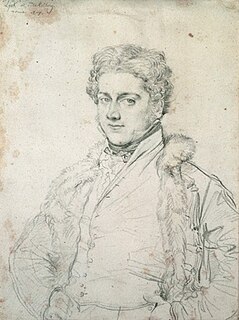
Ghent University is a public research university located in Ghent, Belgium.
Sir Richard van der Riet Woolley OBE FRS was an English astronomer who became the eleventh Astronomer Royal. His mother's maiden name was Van der Riet.

William Robert Ware, born in Cambridge, Massachusetts into a family of the Unitarian clergy, was an American architect, author, and founder of two important American architectural schools.

Friedrich Hermann Loew was a German entomologist who specialised in the study of Diptera, an order of insects including flies, mosquitoes, gnats and midges. He described many world species and was the first specialist to work on the Diptera of the United States.

The Royal Gold Medal for architecture is awarded annually by the Royal Institute of British Architects on behalf of the British monarch, in recognition of an individual's or group's substantial contribution to international architecture. It is given for a distinguished body of work rather than for one building, and is therefore not awarded for merely being currently fashionable.
Sir John Anthony Carroll was a British astronomer and physicist. In the 1920s he worked at the Solar Physics Observatory, Cambridge, UK with F.J.M. Stratton and Richard van der Riet Woolley. He made major technological advances, inventing a high resolution spectrometer, and a coronal camera.

The Royal Naval Academy was a facility established in 1733 in Portsmouth Dockyard to train officers for the Royal Navy. The founders' intentions were to provide an alternative means to recruit officers and to provide standardised training, education and admission. In 1806 it was renamed the Royal Naval College and in 1816 became the Royal Naval College and the School for Naval Architecture. It was closed as a training establishment for officer entrants in 1837.
Alan William Halliday Pearsall was a naval and railway historian, who served for thirty years from 1955 to 1985 on the staff of the National Maritime Museum, Greenwich.
The first School of Naval Architecture opened in 1811 in Portsmouth. The school was principally established to offer a deeper study of the principles of ship design than had traditionally been retained through the apprenticeship model. To this end, students were taught mathematics, science, drawing, history, geography and literature. In 1816, it joined the Royal Naval College at Portsmouth to become the Royal Naval College and the School for Naval Architecture. Political lobbying forced its closure in 1837. Divisions within the Navy had long been felt between those who saw educational pathways as key to progression within the Royal Navy and those who regarded family connections and patronage as the best means of advancement. Of the first School's closure, Reverend Joseph Woolley observed "that establishment produced men of accomplished skill and power in the application of sound theoretical principals to their professional work; but because they were treated with suspicion and dislike by the uneducated members of the profession, who unfortunately had too much influence at head quarters: the old cry of want of experience was raised against them, and the value of their services, were for many years--the best years of their lives--lost to the country."

The Central School of Mathematics and Naval Construction was a short-lived shipbuilding college at Portsmouth Dockyard on the south coast of England. It was founded in 1848 but only lasted five years, until 1853. The first Principal was Joseph Woolley, who in 1864 would found the Royal School of Naval Architecture and Marine Engineering in South Kensington that became part of the Royal Naval College, Greenwich in 1873.

John Percy FRS was an English metallurgist.

Bayfordbury Observatory is the University of Hertfordshire's astronomical and atmospheric physics remote sensing observatory, and one of the largest teaching observatories in the UK. It is located in the relatively dark countryside of Bayfordbury, Hertfordshire, 6 miles from the main university campus in Hatfield. The first telescope was built in 1969, and since then has been used as a teaching observatory for undergraduate students, staff and student research as well as for public outreach activities.

William Henry James Weale was a British art historian who lived and worked most of his life in Bruges and was one of the first to research the Early Netherlandish painting extensively. He was also a pioneer in the study of early bookbinding, and a staunch promoter of Gothic Revival architecture.
Thomas Saumarez (1827–1903) was a British naval captain. He is known for his actions in the Second Opium War.

Wyatt Angelicus van Sandau Papworth (1822–1894) was an English architect, surveyor and antiquarian. He is best known for his editorial work on the part-published Dictionary of Architecture, appearing 1853 to 1892, and the 1867 edition of Joseph Gwilt's Encyclopædia of Architecture.
Kenneth William Donald (1911–1994) was a British physician, surgeon, pulmonologist, cardiologist, professor of medicine, and leading expert on underwater physiology and exercise physiology.
Woolley is the surname of:

Jeremiah Owen was a mathematician, naval architect and Chief Metallurgist to the Admiralty during the first half of the nineteenth century. Owen took part in the debates over the professionalization of naval architecture in the Royal Navy in the 1830s. He his chiefly known for his scientific work on metals in the design of naval vessels.